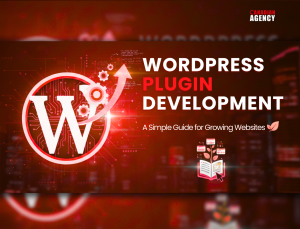In the competitive world of online retail, driving traffic to your website is only half the battle. The real challenge lies in converting those visitors into paying customers. This is where ecommerce conversion rate optimization (CRO) comes into play. By focusing on improving the elements that directly impact conversion rates, ecommerce businesses can significantly enhance their revenue and overall user experience.
What is Ecommerce CRO?
Ecommerce conversion rate optimization is the process of improving various aspects of an online store to increase the percentage of visitors who complete a desired action, such as making a purchase, signing up for a newsletter, or adding items to their cart. This involves analyzing user behavior, identifying obstacles in the buying process, and implementing strategies to overcome these barriers. The ultimate goal of ecommerce conversion rate optimization is to make it easier for visitors to become customers.
How to Calculate Conversion Rate
To measure the success of your CRO efforts, you first need to understand how to calculate your conversion rate. The conversion rate is typically expressed as a percentage and is calculated using the following formula:
Conversion Rate=(Number of Conversions Total Number of Visitors)×100\text{Conversion Rate} = \left( \frac{\text{Number of Conversions}}{\text{Total Number of Visitors}} \right) \times 100Conversion Rate=(Total Number of Visitors Number of Conversions)×100
For example, if your ecommerce site had 5000 visitors in a month and 100 of them made a purchase, your conversion rate would be:
Conversion Rate=(1005000)×100=2%\text{Conversion Rate} = \left( \frac{100}{5000} \right) \times 100 = 2\%Conversion Rate=(5000100)×100=2%
What is a Good Ecommerce Conversion Rate?
The definition of a “good” ecommerce conversion rate can vary depending on the industry, target market, and specific business goals. However, the average ecommerce conversion rate across various industries typically ranges from 2% to 3%. High-performing ecommerce sites can achieve conversion rates of 5% or higher. It’s essential to benchmark your conversion rate against industry standards and continuously strive to improve it through targeted CRO strategies.

Additional Metrics to Help Measure Ecommerce Conversions Rate
While the conversion rate is a crucial metric, other indicators can provide deeper insights into your ecommerce performance. These additional metrics can help identify areas for improvement and optimize the user experience.
Bounce Rate
Bounce rate refers to the percentage of visitors who leave your website after viewing only one page. A high bounce rate can indicate issues with the landing page’s relevance, design, or loading speed. Reducing the bounce rate can lead to more engaged visitors and higher conversion rates.
Average Session Duration
Average session duration measures the amount of time visitors spend on your website during a single session. Longer sessions typically indicate higher engagement levels and a greater likelihood of conversion. Enhancing the quality of your content and overall user experience can help increase average session duration.
Exit Rate
Exit rate is the percentage of visitors who leave your website from a specific page. By analyzing exit rates, you can identify pages that may be causing visitors to leave without converting. Addressing issues on these pages can help retain visitors and improve conversion rates.
Customer Lifetime Value (CLV)
Customer lifetime value (CLV) estimates the total revenue a business can expect from a single customer over their entire relationship. Understanding CLV helps prioritize high-value customers and tailor marketing strategies to maximize long-term profitability.
Tips for Ecommerce Conversion Rate Optimization
Implementing effective ecommerce conversion rate optimization strategies involves optimizing various elements of your ecommerce site, from design and user experience to product pages and checkout processes.
Website Design and User Experience (UX)
A well-designed website with a seamless user experience is crucial for maximizing conversions. Key aspects to focus on include:
1. Responsive Design
Ensure your website is mobile-friendly and adapts to different screen sizes. A responsive design enhances the user experience on all devices, leading to higher engagement and conversion rates.
2. Fast Loading Speed
Website speed is a critical factor in user satisfaction. Slow-loading pages can frustrate visitors and increase bounce rates. Optimize images, use efficient coding practices, and leverage content delivery networks (CDNs) to improve loading times.
3. Clear Call-to-Actions
Prominent and persuasive call-to-action (CTA) buttons guide users towards desired actions. Use compelling language, contrasting colors, and strategic placement to make CTAs stand out and encourage clicks.
4. Intuitive Navigation
A straightforward and intuitive navigation structure helps users find what they’re looking for quickly. Use clear categories, subcategories, and search functionality to enhance the browsing experience and reduce friction.
E-commerce Website Design with user Experience
Product Page Optimization
Optimizing product pages is essential for convincing visitors to make a purchase. Key elements include:
1. High-Quality Images and Videos
High-resolution images and videos allow customers to see products in detail. Include multiple views, zoom functionality, and videos showcasing product features to build trust and reduce uncertainty.
2. Detailed Product Descriptions
Provide comprehensive and accurate product descriptions that highlight key features, benefits, and specifications. Use bullet points, concise language, and storytelling techniques to engage customers.
3. Allow Customer Reviews and Ratings
Customer reviews and ratings add social proof and build credibility. Encourage satisfied customers to leave positive reviews and promptly address any negative feedback.
4. Stock Availability
Clearly display stock availability to manage customer expectations and create urgency. Consider showing low stock alerts to encourage quick purchases.
Checkout Process Improvement
Streamlining the checkout process can significantly reduce cart abandonment and boost conversions. Key strategies include:
1. Make Your Checkout Form Easy to Understand
Simplify the checkout form by asking for only essential information. Use clear labels, real-time validation, and logical flow to minimize user frustration.
2. Guest Checkout Option
Allow customers to complete their purchase without creating an account. Offering a guest checkout option reduces barriers to purchase and can increase conversion rates.
3. Multiple Payment Methods
Offer a variety of payment options, including credit cards, PayPal, and digital wallets. Catering to different preferences can prevent customers from abandoning their carts due to lack of suitable payment methods.
4. Security and Trust Badges
Display security badges and trust seals prominently during checkout to reassure customers about the safety of their personal and payment information.

Offer Free Shipping and Return Policy
Offering free shipping and a flexible return policy can significantly influence purchasing decisions. Shipping costs are a major factor in cart abandonment; providing free shipping removes this barrier and encourages customers to complete their purchase. Similarly, a clear and hassle-free return policy builds trust and reduces the perceived risk of buying online. Make sure to prominently display these offers on your product pages and during the checkout process to maximize their impact.
Provide Limited-Time Discount Coupon Codes
Creating a sense of urgency can effectively drive sales. Limited-time discount coupon codes encourage customers to make a purchase before the offer expires. Promote these codes through banners, pop-ups, and email marketing campaigns. Time-sensitive discounts tap into the fear of missing out (FOMO) and can spur customers into making quicker purchasing decisions, thereby increasing your conversion rate.
Use Live Chat Software and Chatbots
Live chat software and chatbots provide real-time assistance to visitors, addressing their questions and concerns promptly. This instant support can help guide hesitant buyers through the purchasing process, reducing the likelihood of cart abandonment. Chatbots can handle common inquiries around the clock, while live chat agents can offer personalized assistance for more complex issues. Implementing these tools can enhance the customer experience and improve conversion rates by making the buying process smoother and more responsive.
Optimize for Mobile Devices
With a growing number of consumers shopping on mobile devices, optimizing your ecommerce site for mobile users is essential. A mobile-optimized site ensures a seamless experience across all devices, with easy navigation, fast loading times, and simplified checkout processes. Responsive design, large touch-friendly buttons, and mobile-specific features like one-click payments can significantly enhance the user experience for mobile shoppers, leading to higher conversion rates.
Capture Emails
Collecting email addresses from visitors allows you to engage with potential customers and nurture leads through targeted email marketing campaigns. Use pop-ups, exit-intent overlays, and sign-up forms to capture emails effectively. Offering incentives such as discounts, exclusive content, or entry into a giveaway can encourage visitors to share their email addresses. Building a robust email list enables you to send personalized promotions, abandoned cart reminders, and follow-up communications, helping to convert leads into loyal customers.
Always Be Testing
Continuous testing and optimization are crucial for improving your ecommerce conversion rate. Regularly conduct A/B tests on different elements of your site, such as headlines, images, product descriptions, and CTAs, to determine what resonates best with your audience. Testing allows you to make data-driven decisions and incrementally improve your site’s performance. Analyze the results of each test, implement the winning variations, and continue experimenting to stay ahead of changing customer preferences and market trends.
Allow Users to Search Within Categories
Enhancing your site’s search functionality can significantly improve the user experience and increase conversions. Allow users to filter search results within specific categories to quickly find what they’re looking for. This feature is particularly useful for large ecommerce sites with extensive product catalogs. Implementing advanced search filters, such as price range, brand, and product attributes, helps users narrow down their choices efficiently, reducing frustration and increasing the likelihood of a purchase.
A/B Testing
A/B testing, also known as split testing, involves comparing two versions of a webpage or specific elements to see which performs better. This method helps identify the most effective design, content, and functionality choices for your site. For example, you can test different headlines, images, CTA buttons, and page layouts to determine which versions lead to higher conversions. A/B testing provides valuable insights into user behavior and preferences, enabling you to make informed decisions that enhance the overall user experience and drive higher conversion rates.
Conclusion
Ecommerce conversion rate optimization is a multifaceted approach aimed at transforming website visitors into loyal customers. By understanding and leveraging various metrics, implementing strategic design and UX improvements, optimizing product pages, streamlining the checkout process, and continuously testing different elements, ecommerce businesses can significantly enhance their conversion rates. As the digital landscape continues to evolve, staying ahead with effective CRO strategies will be crucial for achieving sustained growth and success in the competitive ecommerce market.
Canadian Software Agency provides comprehensive ecommerce services, including website design, user experience enhancement, product page optimization, and checkout process improvement, tailored to meet your unique business needs. As the digital landscape continues to evolve, staying ahead with effective CRO strategies will be crucial for achieving sustained growth and success in the competitive ecommerce market.




